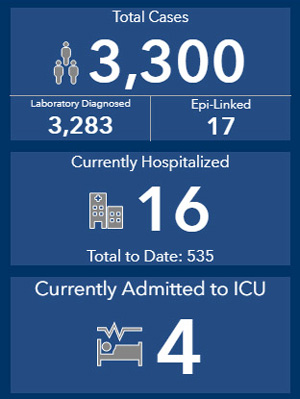
Monday July 20, 2020 ~ VICTORIA, BC
by Mary Brooke, B.Sc, Editor ~ West Shore Voice News
The writing is on the wall — the case count is up and health officials are worried. There were 102 new cases reported in the last three days (from Friday July 17 to Monday July 20): 51 Fri-Sat, 19 Sat-Sun, and 32 Sun-Mon.
That pushes the average up from the earlier 10 per day (in June), to about 20 per day (in the first two weeks of July), to now this new level of about 34 per day. Total cases are now at 3,300.

“We’re on the edge – it might go up but it’s in our hands to control,” said Provincial Health Officer Dr Bonnie Henry today in her joint media teleconference with BC Health Minister Adrian Dix.
It was a carefully worded but powerful reminder that we may have to do a bit more staying at home and much more adherence to social ‘bubbles’ that we have been doing in recent weeks. There was no specific mention of a ‘second wave’ but that’s the direction BC may be heading if the current trend of community activity continues.
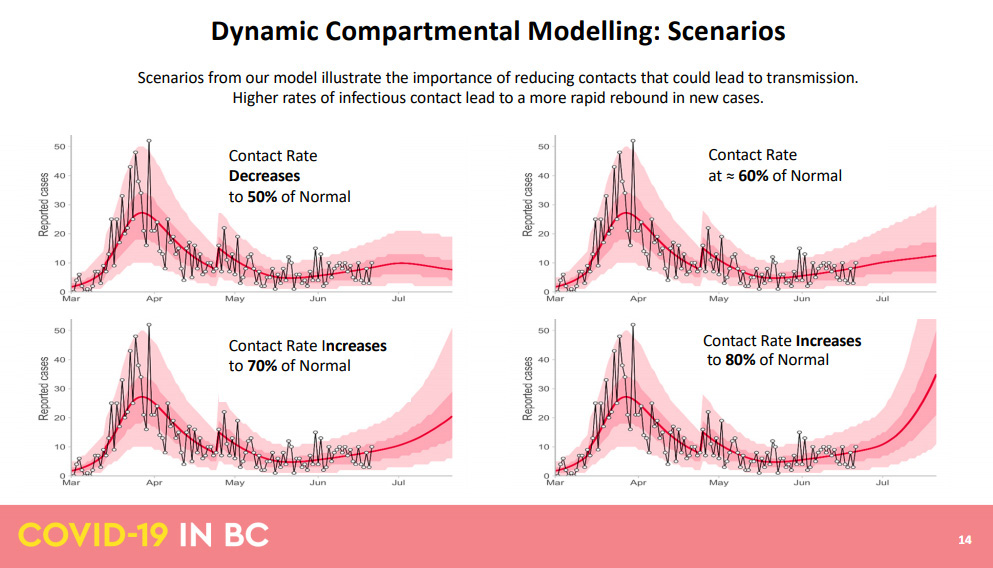
Activity amongst the population appears to be between 65% and 75% of normal now, said Dr Henry. Anything over 65% is the tipping point for an increase in infections, according to the data modelling she presented back on June 23 (see slide 14). So people already know what is being expected of them — mainly to maintain physical distancing and small ‘bubbles’ of social contact.
Recent data presented today shows that the ‘flattened curve’ of April and May has now risen above the threshold for containment of spread. During the flattened curve the Reproduction Rate (how many people spread to more people) was one to one. Now it’s higher than one, which is a concern for public health officials.
“We are no longer having safe connections,” said Dr Henry today. She notes the clusters of infections with people transmitting while at parties, in small groups, and by going to restaurants, bars and clubs.
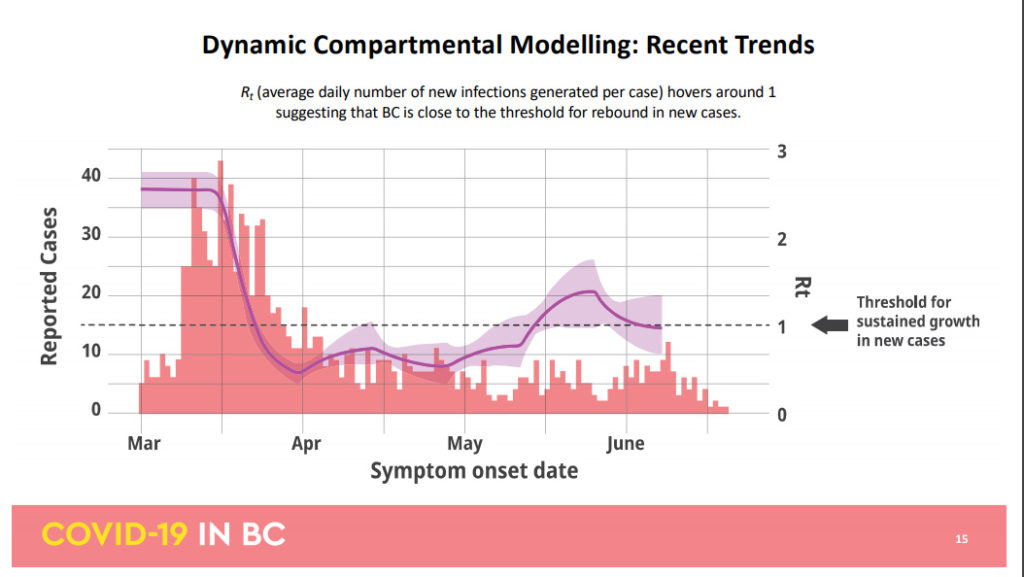
Minister Dix urged people once again to adhere to the prescribed public health rules for containment of COVID-19, including physical distancing, frequent hand washing, and staying home if not feeling well. The average count of 34 new cases per day over the last few days is “something we have to respond to by continuing to use tools from beginning”, said Dix.
Results of May 2020 public survey:

As part of today’s presentation, Dr Henry went over some of the details from the public survey done in May, to which now it is stated that about 394,000 people responded.
Respondents were largely women (70% of total respondents). Responses were received across most age groups, though with fewer respondents in the north and not all racial groups participated equally.
Dr Henry described the ‘Your story, our future’ survey results today as an “early snapshot”, emphasizing that more insights will be gleaned from the survey results in the days ahead.
“The preliminary survey results show that almost half of British Columbians (47%) have experienced worsening mental health as a result of the pandemic. Many have also faced additional economic burden and the stress that comes with that.”
“Notably, those aged 18 to 29 have experienced greater economic and mental health impact than the general population.”
“We know the pandemic has created significant challenges for everyone, so we ask you to please ensure you are reaching out and connecting with those who may be more vulnerable.”
Bending the curve back down:
“The epidemiological data also shows some concerning upward trends: The infection rate for new cases is increasing above one to one, and we are also seeing an uptick in our case curve. This tells us that we are on edge of increasing our social interactions too much and are at risk of a rebound,” said Dr Henry today. “We need to bend our curve back down to where it belongs.”
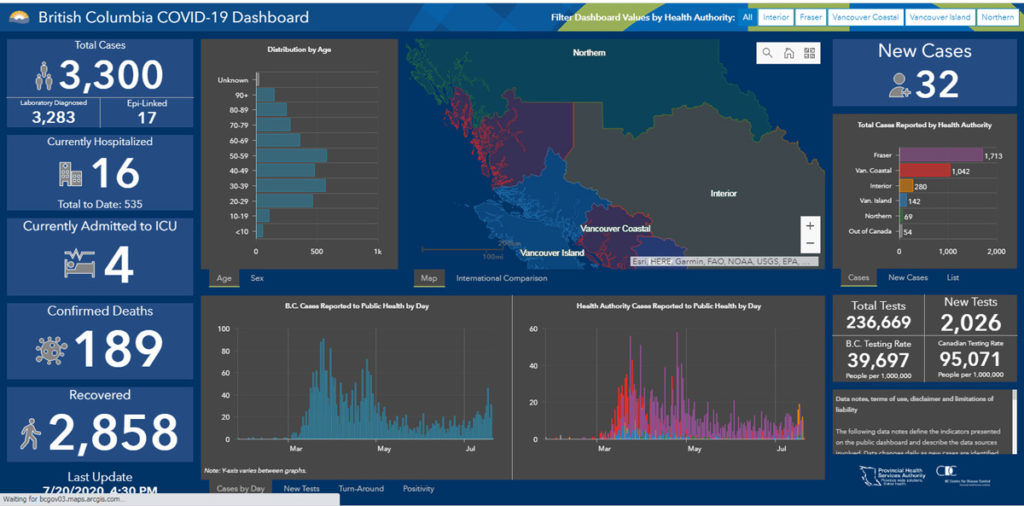
“By playing safe and staying safe, let’s make sure COVID-19 doesn’t spoil our summer.” The advice includes:
“There are a few things we can all do to push that curve back down. Keep your groups small and only spend time with those you know. The more people you see, the more likely someone will have COVID-19 and will spread it to others.
When going out to restaurants and other public places, public health asks that people be considerate of staff. “Remember servers are at higher risk because of the many people they see, so be kind and show gratitude as they follow the WorkSafeBC requirements for safe operations. Ensure your groups are no larger than six people, avoid table-hopping and stay home if you are feeling unwell.”
“If you are hosting a small gathering, remember ‘fewer faces and bigger spaces.’ Keep your gatherings small, know everyone who is coming, stay outside as much as possible and have a designated ‘contact keeper’ so you are able to quickly alert everyone afterward, if necessary.
COVID age profile:
Children and youth:
In children under age 10 there have been 54 cases of COVID-19 during the pandemic (up by three cases in the last three days). This group will be impacted by back-to-school in September.
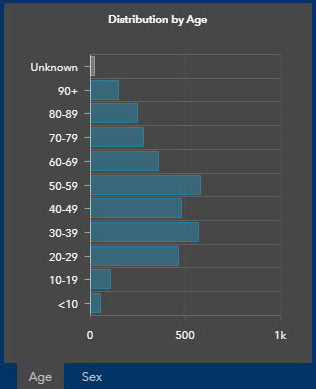
The health impact of COVID-19 on young children is not fully known. COVID-19 infection appears to come along with the potential for cardiovascular impacts as part of multisystem inflammatory syndrome in children (MISC) which could have health impacts beyond the acute illness phase.
In the age 10 to 19 age grouping there have been 107 cases to date (seven new since July 17). Teen socialization is part of building adult lives. Restriction of their activity now will lead to mental, emotional, financial and educational issues later.
Children and teens do show resiliency to serious infection in most cases. Together the children-and-youth category has in total seen 161 cases, but no deaths.
Young adults:
In the age 20 to 29 year category there have been 465 COVID-19 cases to date, with 41 of those being new in the previous 72 hours.
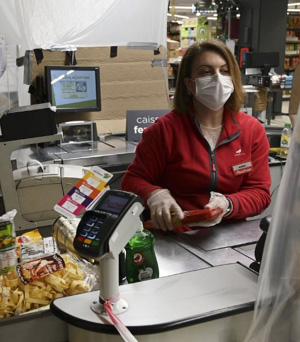
Young adults would normally now be branching out in post-secondary, career development and life-defining relationships but are being impacted by the social and physical distancing requirements of public health for managing the impact of COVID-19.
This age group provides a key component of essential workers during the COVID-19 pandemic, especially in the retail and hospitality sectors.
Mainstream working age population:
People in three middle-age categories combined — 30 to 39 years, 40 to 49 years, and 50 to 59 years — comprise the mainstream working age population in defined careers. They are maintaining families and building businesses. Many are working in key essential work sectors during the pandemic including health care, education, transportation and infrastructure maintenance. Collectively this is the age bracket that generates tax revenue for governments.
In the 30 to 59 composite age bracket there have been 1,624 cases of COVID-19, with 39 of those new in the 72 hours between Friday July 17 and today July 20. Of the 39 new cases, the majority (20 of them) occurred in the 30 to 39 age group (thought to be evidence of social mingling on Canada Day weekend and at bars and home parties), with three in the other two age groupings.
The case tallies within the 1,624 total for the 30 to 59 age bundle are 566 cases (age 30 to 39) which is up 20 from three days ago; 477 cases (age 40 to 49) which is up 10 from Friday, and 581 cases (age 50 to 59) which is up by nine cases from July 17.
The median age for COVID-19 cases in BC falls within this age group. The median age is 50 years (as of the July 16, 2020 BC CDC Surveillance Report).
Young seniors:
The 60 to 69 year age group in BC could be seen as Tier 1 of the ‘older’ generation. The total case count is 360 in this age group (as of July 20), up from 358 three days ago.

These are first-time seniors, most of whom are planning for or embarking upon a shift in employment or into some form of retirement. Many are still physically active and maintaining good health (though possibly with underlying or emerging health issues due to age). Many are active in their community.
While many in this age bracket are still working (a legacy for many due to negative financial impacts during the Great Recession 2008-2017) they are at the tail end of contributing to the tax revenue base. Many in this age group are starting to receive CPP/OAS and probably also private or independent pension income.
The median age for persons “ever hospitalized” with COVID-19 is in this age group. The median is 69 years, according to the BC CDC (July 16, 2020 Surveillance Report).
Older seniors:
In the combined age grouping of age 70 to 89 there have been 522 cases of COVID-19, with four new in the last reporting period (July 17 to 20). This Tier 2 of the older generation sees a larger number in long-term care homes or assisted living facilities or receive in-home care in their own homes.
To date, 401 residents of long-term care and 256 (up one from Friday) staff been affected in health care facility outbreaks, said Dr Henry on July 20.
This age bracket likely has health challenges and requires various types of supports for shopping, delivery, errands and transportation.
Many could be considered financially stable in that they receive CPP/OAS as well as many also receiving additional private pension income. But many seniors do not have adequate income, which contributes to health issues.
In current BC CDC statistics (July 16), the median age for COVID deaths shows as 85 years.
Elders age 90+:
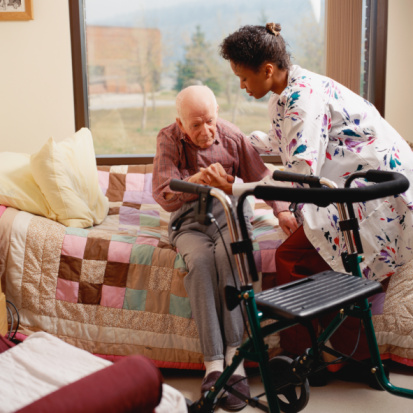
This Tier 3 grouping by age is the most vulnerable to COVID-19, as has been declared by public health since the start of the pandemic. Frailty related to age is the main reason for susceptibility to the viral infection which strikes hard at the lungs, heart tissue and cardiovascular system.
The majority of persons in this age group likely reside in long-term care homes or assisted living, in fragile health.
There is a high-impact on the provincial health care budget to maintain this age group.
As of July 17 there were 148 cases of COVID-19 in this age group, and that did not change by July 20.
Vancouver Island profile:
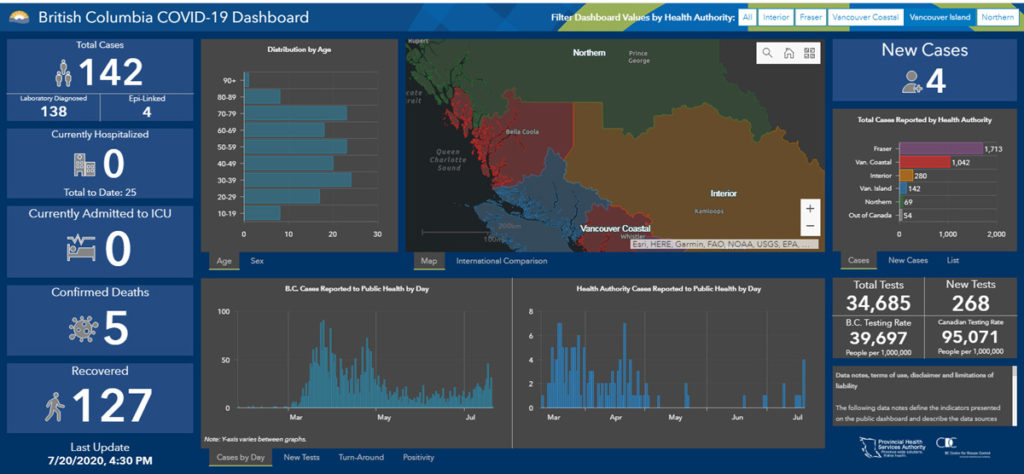
There have been 142 cases of COVID-19 on Vancouver Island since the beginning of the pandemic. Four new cases show in the latest report (July 20). No one is presently in hospital within Island Health for COVID-19, and no one has died from COVID in recent weeks. There have been five deaths on the island from COVID-19.


